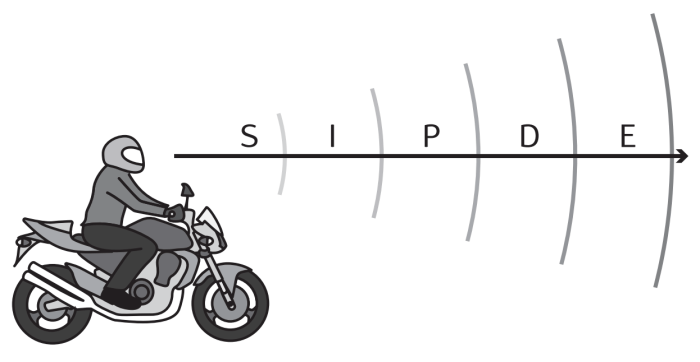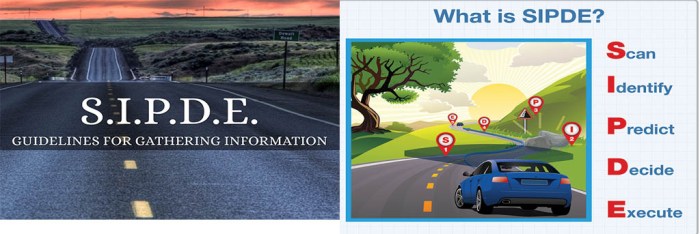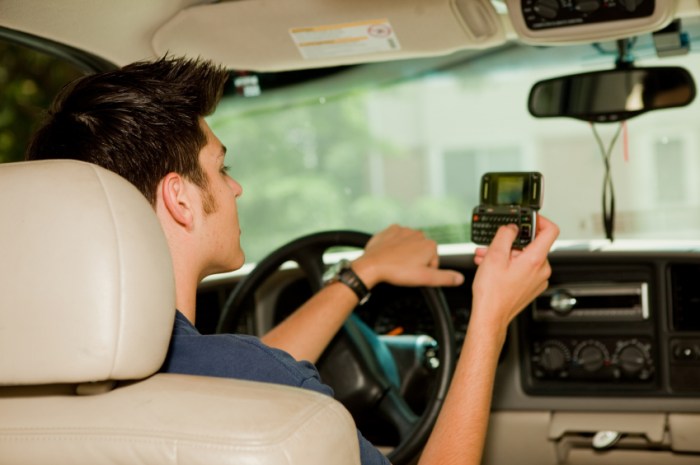What is SIPDE in driving? It’s a technique that can help you become a safer and more confident driver. In this article, we’ll explain what SIPDE is, how it works, and why it’s so important.
SIPDE stands for Scanning, Identifying, Predicting, and Deciding/Executing. It’s a four-step process that helps you to anticipate and respond to hazards on the road.
Definition of SIPDE: What Is Sipde In Driving

SIPDE stands for Scanning, Identifying, Predicting, Deciding, and Executing. It is a five-step process used in defensive driving to help drivers make safe and informed decisions while operating a vehicle. The purpose of SIPDE is to improve situational awareness, reduce the risk of accidents, and promote smooth and efficient driving.
In the realm of driving, SIPDE stands as an acronym that guides drivers through safe maneuvers. It encompasses scanning, identifying, predicting, and deciding, providing a framework for navigating the road. However, when it comes to science fiction, “set phasers on stun” has become a famous phrase.
Just as SIPDE helps drivers make informed decisions, this phrase in set phasers on stun pdf empowers fictional characters to subdue their opponents non-lethally, reinforcing the importance of calculated actions in both driving and intergalactic adventures.
Importance of SIPDE
Using SIPDE is crucial for several reasons. First, it helps drivers identify potential hazards early on, giving them ample time to react appropriately. Secondly, it encourages drivers to consider the consequences of their actions and make decisions based on a comprehensive understanding of the driving environment.
Finally, SIPDE promotes a proactive approach to driving, enabling drivers to anticipate and adapt to changing conditions effectively.
Steps of SIPDE

SIPDE is a systematic process that drivers use to make safe and informed decisions while driving. It involves four key steps: Scanning, Identifying, Predicting, and Deciding/Executing. Each step plays a crucial role in helping drivers anticipate and respond to potential hazards on the road.
Scanning
Scanning involves continuously observing the driving environment for potential hazards. This includes looking ahead, to the sides, and behind the vehicle. Drivers should scan for objects, vehicles, pedestrians, and any other potential obstacles that may pose a threat. Effective scanning allows drivers to gather information about their surroundings and identify potential hazards early on.
Identifying
Once potential hazards are identified, drivers need to determine their nature and level of risk. This involves assessing the distance, speed, and direction of the hazard, as well as its potential impact on the vehicle and its occupants. Identifying the hazards helps drivers prioritize their actions and make informed decisions about how to respond.
Predicting, What is sipde in driving
Predicting involves anticipating the future actions and movements of the identified hazards. Drivers need to consider the trajectory of the hazard, the behavior of other road users, and the potential consequences of different actions. Accurate prediction allows drivers to anticipate potential conflicts and develop appropriate strategies to avoid or mitigate them.
Deciding/Executing
The final step of SIPDE involves making a decision about the appropriate action to take and executing it safely. Drivers need to consider the available options, weigh the risks and benefits of each option, and choose the one that is most likely to ensure the safety of themselves and others.
Effective decision-making and execution are crucial for preventing accidents and maintaining a safe driving environment.
Benefits of Using SIPDE

SIPDE offers numerous advantages that enhance driving safety, reduce the likelihood of accidents, and instill greater confidence behind the wheel. By adhering to the SIPDE framework, drivers become more aware of their surroundings, anticipate potential hazards, and respond appropriately, leading to safer and more enjoyable driving experiences.
In real-world scenarios, SIPDE has proven its effectiveness in preventing accidents and mitigating their severity. For instance, a study conducted by the National Highway Traffic Safety Administration (NHTSA) found that drivers who used SIPDE were significantly less likely to be involved in rear-end collisions and had a lower risk of fatal crashes.
Improved Safety
SIPDE promotes a proactive approach to driving, encouraging drivers to identify and anticipate hazards early on. By scanning the road ahead, checking mirrors, and being aware of potential risks, drivers can make informed decisions and take evasive action when necessary, minimizing the likelihood of accidents.
Reduced Accidents
The systematic process of SIPDE helps drivers identify and respond to hazards effectively, reducing the risk of accidents. By scanning the road ahead and anticipating potential dangers, drivers can adjust their speed, position, or trajectory to avoid collisions.
Increased Confidence
SIPDE instills confidence in drivers by providing a structured framework for navigating various driving situations. By following the SIPDE steps, drivers develop a heightened sense of awareness and control, enabling them to handle unexpected events more effectively.
Challenges in Implementing SIPDE

Implementing SIPDE in driving can present several challenges, including:
- Cognitive Load:SIPDE requires drivers to process a significant amount of information and make quick decisions, which can be overwhelming, especially in complex driving situations.
- Habitual Behaviors:Drivers may have ingrained habits that conflict with SIPDE principles, making it difficult to adopt the new approach.
- Lack of Training:Many drivers have not received formal training on SIPDE, which can hinder their ability to implement it effectively.
- Resistance to Change:Some drivers may be resistant to adopting new driving practices, viewing SIPDE as unnecessary or impractical.
Strategies to Overcome Challenges
To overcome these challenges, several strategies can be employed:
- Training and Education:Provide comprehensive training programs that explain SIPDE principles, benefits, and practical application. This can help drivers understand the rationale behind SIPDE and develop the necessary skills.
- Practice and Reinforcement:Encourage drivers to practice SIPDE in real-world driving situations. This allows them to gain experience and build confidence in using the approach. Reinforcement through feedback and coaching can further enhance learning.
- Technology Integration:Utilize technology such as driver assistance systems and simulation tools to support SIPDE implementation. These tools can provide real-time feedback and create safe environments for practice.
- Incentives and Recognition:Offer incentives or recognition to drivers who demonstrate proficient use of SIPDE. This can motivate drivers to adopt the approach and encourage sustained implementation.
Advanced Techniques for SIPDE

To enhance the effectiveness of SIPDE in complex driving situations, advanced techniques such as hazard recognition, risk assessment, and defensive driving can be employed.
Hazard Recognition
Hazard recognition involves identifying potential hazards in the driving environment, such as other vehicles, pedestrians, weather conditions, and road hazards. Drivers should be constantly scanning their surroundings and anticipating potential hazards to make informed decisions.
Risk Assessment
Once hazards have been identified, drivers should assess the potential risks associated with each hazard. This involves considering the severity of the hazard, the likelihood of it occurring, and the consequences of a collision. By understanding the risks, drivers can make informed decisions about how to respond.
Defensive Driving
Defensive driving involves taking proactive measures to reduce the risk of a collision, even when other drivers are behaving unpredictably. This includes maintaining a safe following distance, being aware of blind spots, and anticipating the actions of other vehicles. Defensive driving techniques help drivers to minimize the impact of hazardous situations and protect themselves and others on the road.
FAQ Resource
What is the first step of SIPDE?
The first step of SIPDE is Scanning.
What is the purpose of Identifying in SIPDE?
Identifying helps you to recognize potential hazards on the road.
How does Predicting help in SIPDE?
Predicting helps you to anticipate what other drivers and pedestrians might do.
What is the final step of SIPDE?
The final step of SIPDE is Deciding/Executing.